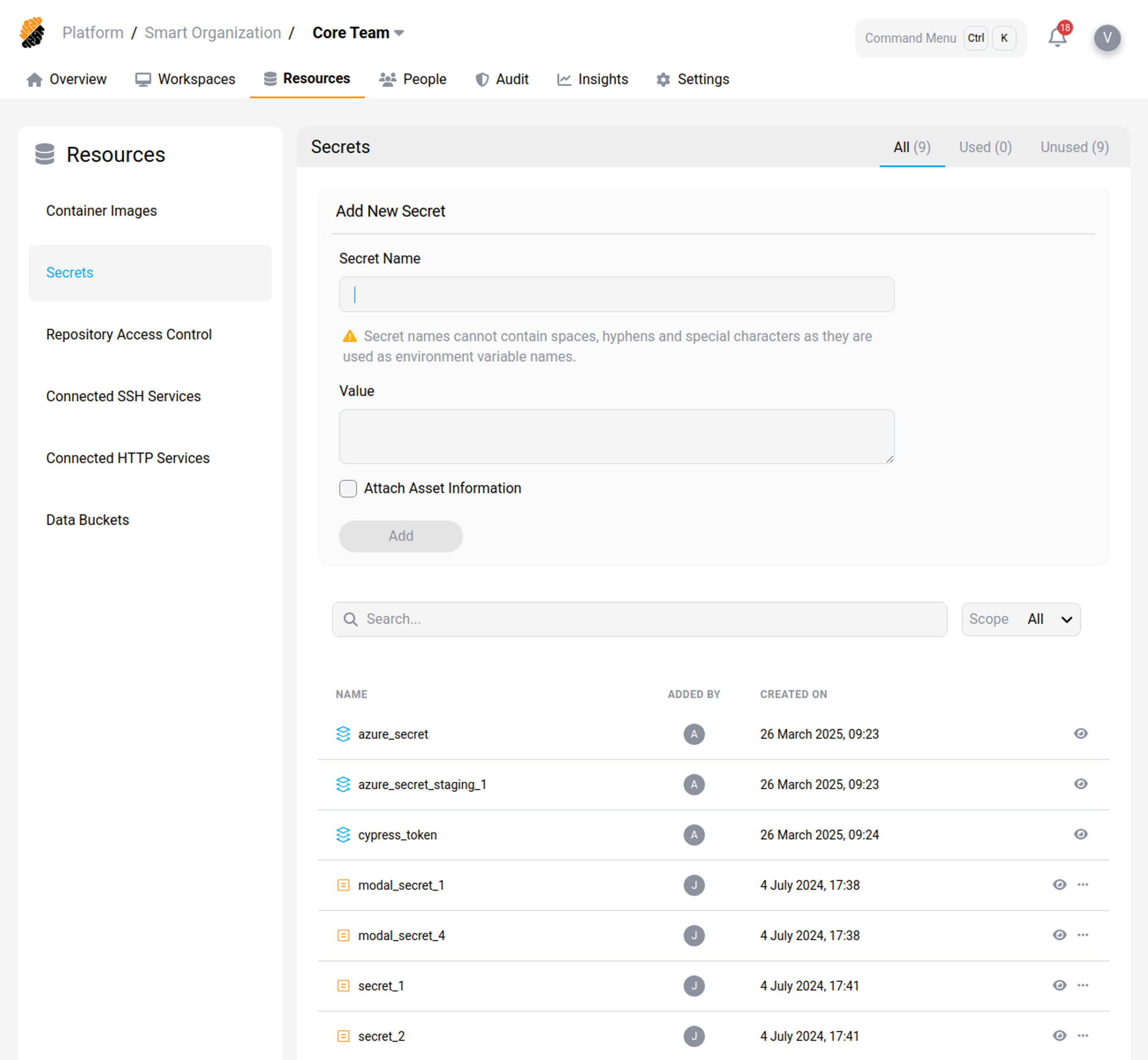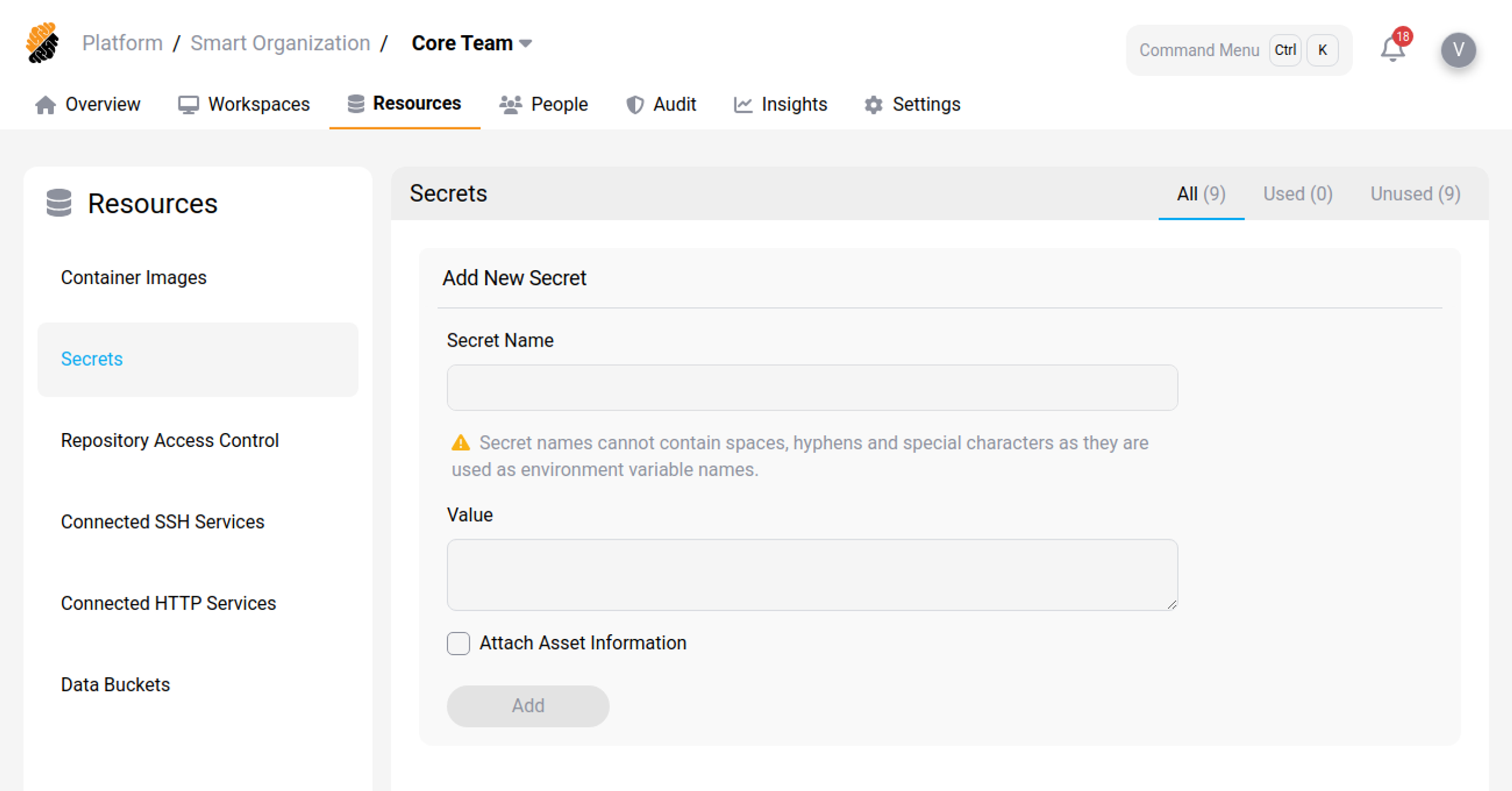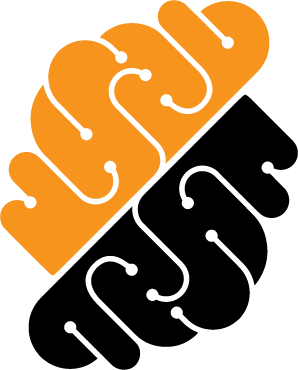Appearance
Secrets
Secret management allows developers to securely store sensitive data such as passwords, keys, and tokens, in a protected environment with access controls capabilities.
Generally, the term "secret" points to any necessary credentials (e.g cryptographic keys, tokens and password necessary to authenticate with a service during the development process. The storage of secrets is a service that can be provided by the platform or by an external mechanism. Once registered on the platform, secrets are attached to workspaces are available in the container's filesystem as environment variables or files. This section explains how secrets are managed by the platform, but note that your platform might use an external service for that purpose.
View Secrets
Secrets used in the organization or project are displayed in a table. You may search for one or filter those used in workspaces.
 Secrets List
Secrets List
A Secret is defined by the following characteristics:
- Basic information: Information such as name, the user who added it, scope of use (platform, organization or project).
- Class Level: This option defines the visibility for the secret based on the user's permissions.
- Asset Information: This option allows for providing a description of the secret.
Add a New Secret Permission: Resources::Manage
You can create a secret at the top of the Secret Page.
 Add Secrets Section
Add Secrets Section
You will need to enter the following information:
- Name, a name to identify the secret,
- Value:, i.e. the secret's value, and an
- Asset information, a description of the secret.
